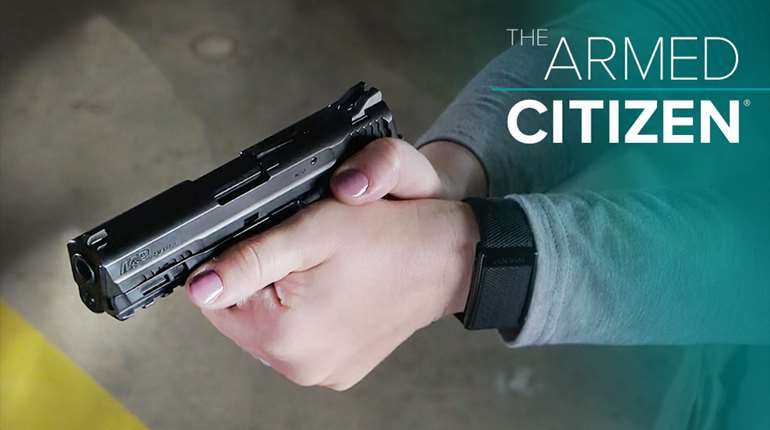
I believe we would all prefer to tackle the challenges of life under ideal conditions if we could. Wouldn't it be great if all self-defense practitioners had access to top-of-the-line gear, a bottomless supply of practice ammunition and three weeks a year to attend professional live-fire training sessions? But the truth of the matter is that most of the time we have to do the best we can with whatever equipment and skills are at hand when the need arises.
As I’m writing this, the country is still suffering the aftershocks of the Covid-19 pandemic. With so much civil unrest and the efforts to defund the police, the demand for guns and ammunition are at a record high. This has made new guns scarce and expensive. For some folks the shelves are bare while others are struggling with financial difficulties and can't afford high priced factory fresh guns.
As a result of these current conditions, a lot of old, used and military surplus guns are being dusted off and put back on the active-duty roster. Sporting models that are not as well-suited to defensive applications are also being pressed into service. But a home-defense plan is more than just the firearm. So, here are a few tips to keep in mind if you're preparing a home-defense plan with limited resources.
Whatchagot Guns: Used, Old & Antiques
Guns don't go bad or spoil like milk and bread. Much like classic automobiles, when properly maintained they can have a multi-generational working life span. Ammunition can last for a long time, too. If it's stored in a cool dry place it will keep for decades. I once fired a rifle that was carried by a family member into World War I using ammunition that was at least 30 years old at the time. They both shot as well as when they came off the assembly line.

Pre World War II revolvers like these are enjoyable collector’s items but they should not be used for self-defense.
However, real care should be taken in evaluating whether a particular gun is ready to be put to work. Antique firearms should not be used for self-defense. Under the United States Gun Control Act of 1968, cartridge guns made before or during 1898 legally qualify as “antiques.” But as a rule of thumb, I would go ahead and include guns made much before World War II in the too-old-for-reliable-self-defense category (and I say that knowing some folks disagree).

Curio & Relic military surplus guns are a mixed lot. Some are gems while others are boat anchors. Check in with a gunsmith to verify which one your gun may be.
Old guns, in my book, have an age range from post World War II production to the mid 1970s. This category includes several Curio & Relic (C&R) models, meaning any firearm which is at least 50 years old and in its factory original configuration. There were plenty of rock solid and dependable guns made during these years but they have to be evaluated on a case-by-case basis. East European and Chinese military surplus guns of this era have become popular affordable collectors’ items. But they can suffer from weak springs, cracked frames and fragile firing pins. If you're looking to use a C&R gun for personal protection then it should definitely be taken to a professional gunsmith for a thorough evaluation to make sure it's safe to use.

Used guns like these retired police sidearms can be a real value to budget-conscious self defenders.
Used guns from the 1980s onward can be terrific self-defense options if they have been well cared for by their previous owners and not shot to the point of being worn out. Law enforcement surplus guns, which often have well worn exteriors, are not shot that often. So they can be perfectly sound on the inside while looking dinged up on the outside.

Sporting .22 Pistols, single-action revolvers and small-caliber pocket pistols all get the fish eye from self-defense gurus. But if you understand their limitations, they can serve as a stop gap until you can afford a better option.
Whatever whatchagot gun you may choose to use, it's important to do the following:
- Ensure it's working properly. Thoroughly clean and lubricate the gun, inspect the parts for damage and conduct a bench check before shooting it. When in doubt, seek out a qualified gunsmith.
- Use high-quality ammunition. Use the best ammunition you can find and the right loads for the job. Test fire the gun with the ammunition you plan to use and make sure to clean it again before staging it.
- Learn how to use it! Every type of gun has its useful features and limitations. Make sure you understand what they are and how they affect your defense plan. If it is a low-capacity gun, then load extra magazines or speed loaders if you have them. If it’s a slow to load gun, like a single-action revolver, then you may want to have another defensive tool at hand if it runs out of ammunition.
Staging Secondary Defensive Options
Some folks opt to stage defensive firearms in more than one location around their home using smaller quick-access safes or strong boxes. This same principle can be applied with secondary defensive options if you only have one firearm to work with.

A sensible safety practice, for several reasons, is placing flashlights and fire extinguishers around the home, garage and workshop. They don't cost much compared to the security they provide. The usefulness of flashlights in the dark or when the power goes out is a given. Fire extinguishers not only stop fires from spreading, they make an effective second-tier defensive tool. Spray intruders in the face to blind and choke them and then, if necessary, use the canister as a bludgeon. 
Lots of folks opt to carry OC pepper spray as part of their everyday carry set. If you have a small can, go ahead and move it to your nightstand before going to sleep instead of leaving it in your purse. Medium and large canisters of spray intended for home defense are also available and affordable at prices around or under $30. If you have a can of bear spray you take on nature hikes, you might as well put it where you can reach it rather than leaving it in a box in the garage.
Put Your Home to Work for You
The military has protocols in place for “hardening” key facilities. This is a $2 way of saying they take steps to make it more difficult to enter when uninvited. Remember that firearms are not the first line of a home defense. There are several measures we can take to harden our homes against intruders that are not all that expensive or time consuming to implement.

Criminals are worried about two things when breaking into a home: getting hurt and getting caught. Being confronted by an armed home owner covers the fear of injury quite effectively. No one wants to get shot. As for avoiding getting caught, stealth and speed are the keys to making a clean getaway.
So start by taking a look at the exterior lighting. Today's LED house lights are long lasting and inexpensive to run. Replace older dim bulbs with bright ones. Replace broken fixtures and install new ones where needed. Add motion activated floodlights if possible. If all you've got to work with is a single bulb over your front door, then turn it on and leave it on overnight to keep the doorway out of the shadows.
Basic security precautions work to slow criminals down. Make sure all of your doors and windows, including upper story windows, are closed and locked at night. Replace flimsy or damaged locks with new ones and add locks where needed. If possible, add lockable secondary security doors to the front and rear entrances. If you have a security system installed, then be sure to get into the habit of activating it. Door bell cameras, peep hole cameras and wireless security systems that can be managed and monitored with a smart phone are much more affordable than they used to be and fairly easy to install.
Develop a Layered Defense Strategy
All too often we get caught up in how our situation looks compared to someone else's. I see folks get discouraged and say things like, "I don't have...," "I can't afford...," "There's just not enough time...," and, "I'm not good at...", which means they're talking themselves into believing there's nothing to be done. As a result, they choose to ignore their self defense planning and just hope for the best.
But remember this: An “obsolete” gun or cartridge is not useless, a limitation in a gun's design is not a malfunction and a person who is under-armed is not in the same boat as someone who is unarmed.
Soldiers gear up with contingency plans in place. If their rifle jams or runs out of ammunition, they transition to their sidearm. If that runs dry, they go to a combat knife. If the knife drops they fight with their fists and feet. We can employ the same layered strategy with what we have on hand. Turn on the porch light and lock the doors and windows. Activate the security system. Have the best gun and ammunition you've got clean, loaded and staged where you can get to it. And then, what's next if needed? A fire extinguisher, a canister of pepper spray, etc.
My point is that no matter what our current circumstances may be there is always something we can do to improve our level of preparedness for a defensive situation. It can be increasing our knowledge, developing our skills, strengthening our bodies, organizing on-hand inventory or adding options to our available tool sets. Whatever it may be, take stock of what you have, make the most of it and then work out the plan for implementing improvements and upgrades as opportunities arise to do so.















































